Available 24/7
Available 24/7
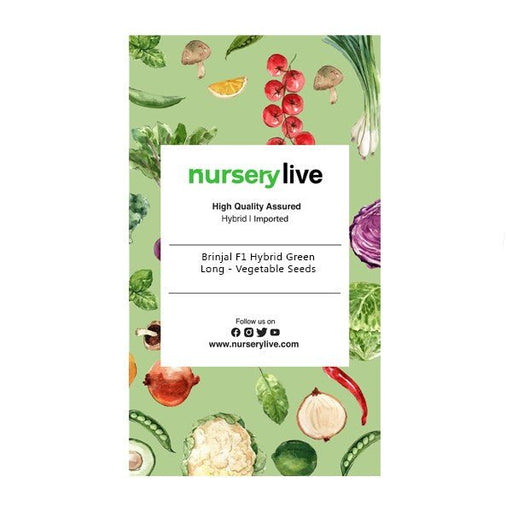
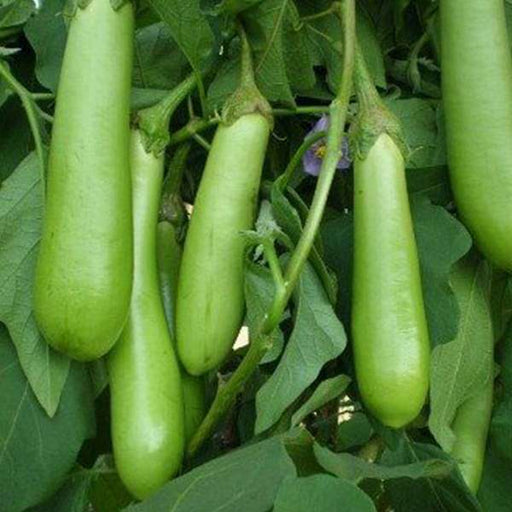 Save 50%
Save 50%
Description 1 packet contains - 50 seeds of brinjal. The brinjal (eggplant or baingan or aubergine) is called the King of Vegetables by some cultur...
View full details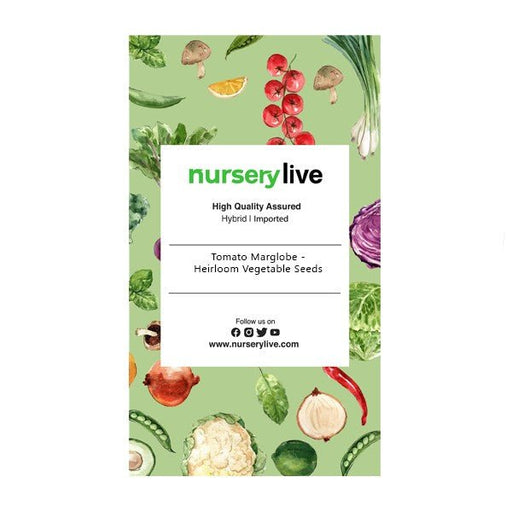
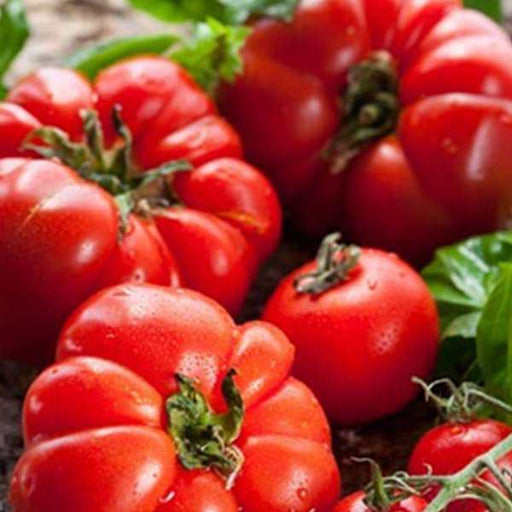 Save 50%
Save 50%
DescriptionTomato Marglobe - Seeds1 packet contains - 100 seeds. The most popular garden vegetable crop, tomatoes come in a wide range of sizes, s...
View full details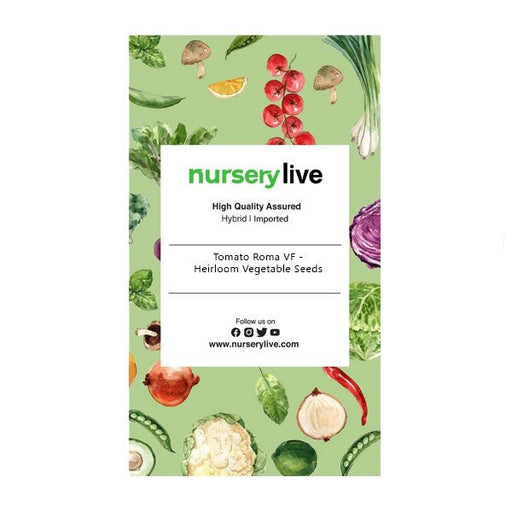
 Save 50%
Save 50%
Description1 packet contains Tomato Roma VF - Seeds - 50 seeds. The most popular garden vegetable crop, tomatoes come in a wide range of sizes, sh...
View full details
 Save 51%
Save 51%
DescriptionThe Spinach is a most common vegetable in many food cultures. This packet contains approximately 35 seeds.Spinach has similar growing co...
View full details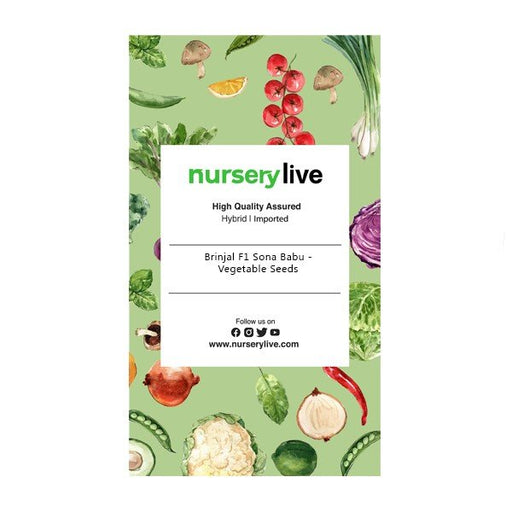
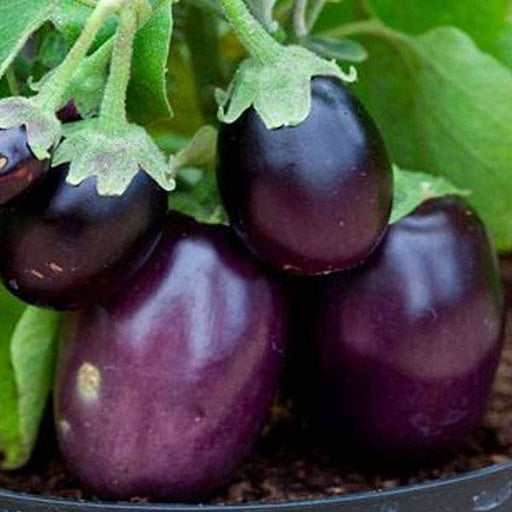 Save 50%
Save 50%
Description 1 packet contains - 50 seeds of brinjal. The brinjal (eggplant or baingan or aubergine) is called the King of Vegetables by some cultur...
View full details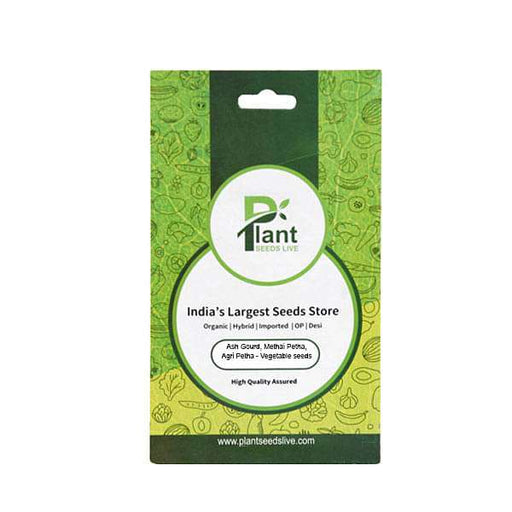
 Save 50%
Save 50%
Description1 packet contains Ash Gourd - 3gm seeds.Ash gourd is a tender vine, which produces large fruit. Famous as a wax gourd, winter melon, whi...
View full details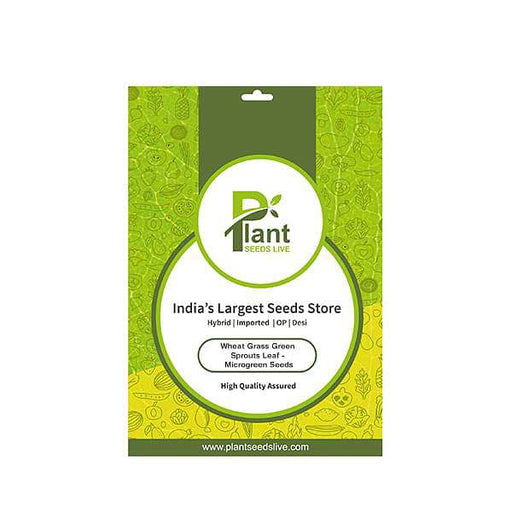
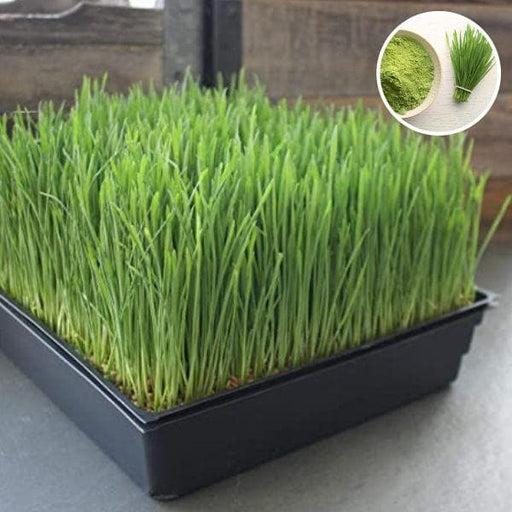 Save 50%
Save 50%
DescriptionWheat Grass Green Sprouts Leaf - Microgreen Seeds Microgreens are relatively easy to grow on a small scale and can also thrive indoors i...
View full details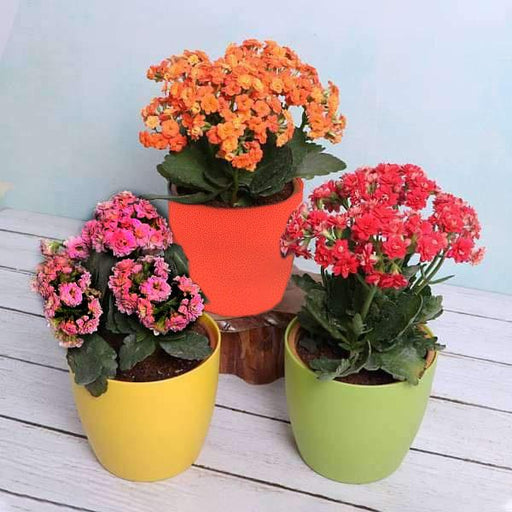
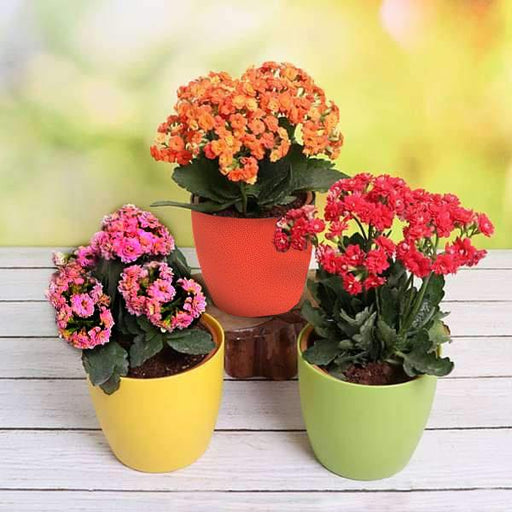 Save 10%
Save 10%
DescriptionThe Kalanchoes are thick leaved elegant flowering succulent houseplants. Make your home garden more vibrant and full of colors by bringi...
View full details Save 45%
Save 45%
Description Pack of 4 succulents that are very easy to care for. A perfect pack to start growing plants worry-free. About You get 4 succulent plant...
View full details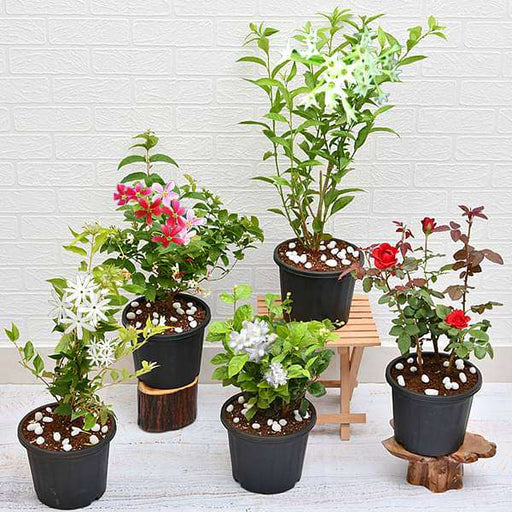 Save 12%
Save 12%
DescriptionAromatic plants bring into a room or house an often overlooked benefit. These plants have a pleasant scent.About You plant a hope when ...
View full details
 Save up to 50%
Save up to 50%
DescriptionIf you long for indoor greenery but have not succeeded with houseplants, consider these beautiful succulents. A perfect pack to start gr...
View full details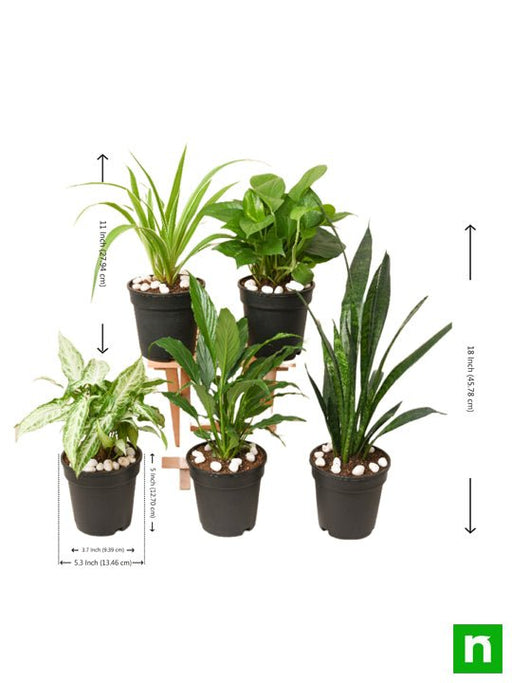
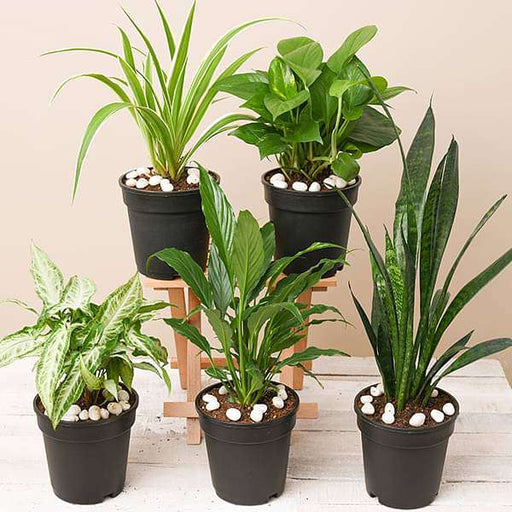 Save 21%
Save 21%
DescriptionThis plants pack contains amazing 5 houseplants + 5 Pots. Surround your home with these best pollution killer plants for a clean and hea...
View full details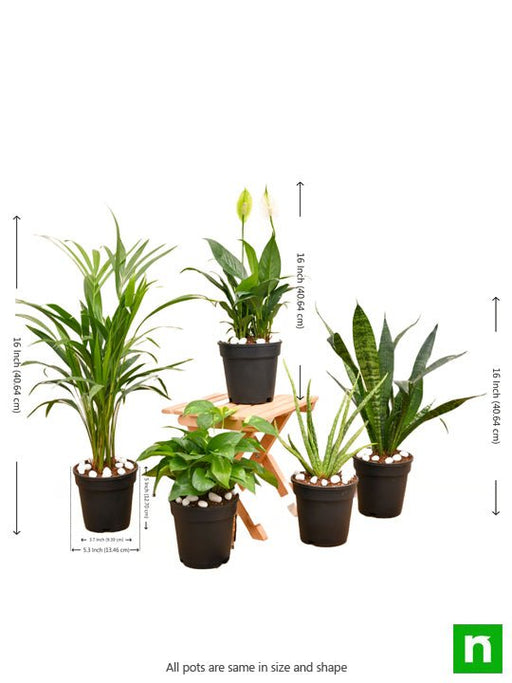
 Save 20%
Save 20%
DescriptionIf you or anyone from your family wants to breathe fresh air, cleaner air in their homes, this 5 plants pack purify the air around and r...
View full details
 Save 40%
Save 40%
DescriptionSet of 2 Bonsai Looking Grafted Adenium PlantsAbout You get 2 Bonsai looking hardy grafted Adenium plants in a single pack.Plants are k...
View full detailsIf you like greenery, then you’re bound to love monsoons. With the shower comes greenery and the mesmerizing petrichor that makes you spend more time on your balcony with a cup of tea.
How about adding vivacious colours by planting your favourite flowers on your terrace with Rainy Sowing Flower Bulbs?
Reading a book on a rainy afternoon or catching up with friends over tea on a monsoon evening becomes all the more special when you're surrounded by vibrant flowers, right?
For most of us who live in city apartments, having a large garden at home is a dream, but we can always compensate by downsizing it on our balconies. People are usually afraid to grow plants during the monsoon season because they die quickly.
However, if you have a gardener's heart, you will fall in love with rain's enchantment.
But gardening during rainy seasons can be a cumbersome task. Further, the plants can get washed away or rot up if not given enough care. Don’t worry! Nurserylive comes to your rescue by offering a range of Rainy Sowing Flower Bulbs, which are pre-treated to prevent them from being eaten up by insects or rodents.
The Rainy Sowing Flower Bulbs are usually sown in the monsoon or early winters. They bloom during the summers or autumn. A majority of them are perennial, which means they last for two years once sown.
The flowers grown through these bulbs are generally used for ornamental purposes. They are best suited for flower pots or garden beds, depending on their height.
Nurserylive offers a pack of assorted hues of Rajnigandha, Daffodil, Hyacinth, Gladiolus, Iris, and many more. The optimal temperature for these bulbs is between 25° - 34° Celsius.
Choose from our extensive range and plant your favourite blossoms in monsoons with our Rainy Sowing Flower Bulbs.
Embrace the power of rain and learn how to sow flower bulbs during the wet season. With the right techniques and a little patience, you'll be rewarded with a garden that flourishes in the downpour.
Discover the perfect flower bulbs that thrive in damp environments. From Zephyranthes lilies to Camassias, these resilient beauties won't let a little rain get them down.
Master the art of planting bulbs in wet conditions. Follow these expert tips on proper drainage, soil amendments, and planting depth to ensure a successful rainy sowing season.
When life gives you rain, plant flood-tolerant bulbs! Learn about the toughest flower bulbs, such as crinums and Louisiana irises, that can withstand heavy downpours and soggy soil.
Create a stunning and eco-friendly rain garden by planting bulbs that love wet conditions. These gardens not only look amazing but also help manage stormwater runoff in your landscape.
Enhance your rainy sowing garden with complementary plants that love the wet weather. Pair your bulbs with moisture-loving perennials and shrubs for a lush, thriving garden.
Don't let limited space or soggy soil get in the way of your rainy sowing dreams. Discover how to grow flower bulbs in containers, even during wet conditions.
Keep your bulbs healthy and happy during rainy sowing season with proper care. Learn about the ideal watering, fertilizing, and disease prevention methods to ensure a thriving garden.
Attract pollinators and other beneficial creatures to your garden by planting bulbs that bloom in wet conditions. Bees, butterflies, and birds will thank you for the feast!
Go green by adopting sustainable practices in your rainy sowing garden. Plant native species, conserve water, and use eco-friendly materials to create a garden that's kind to the planet.
New to rainy sowing? Get started with this beginner's guide to planting flower bulbs in wet conditions. With helpful tips and advice, you'll soon be a rainy sowing pro.
Equip yourself with the right tools for planting flower bulbs in wet conditions. From bulb planters to moisture meters, these gadgets will make your rainy sowing experience a breeze.
Plan your rainy sowing season with this handy calendar, detailing the ideal planting times for various flower bulbs. Stay organized and ahead of the weather for a successful garden.
Tackle waterlogged soil head-on with these expert solutions. Improve drainage, amend the soil, and choose the right bulbs to create a thriving garden despite the challenges.
Get inspired by the success stories of fellow gardeners who have mastered the art of rainy sowing. Learn from their experiences and apply their wisdom to your own garden.
Discover how to adapt your rainy sowing techniques for different climates. From tropical downpours to temperate drizzles, there's a rainy sowing strategy for every gardener.
Connect with like-minded gardeners and participate in bulb-swapping communities. Share your favorite rainy sowing bulbs, trade tips, and expand your garden's diversity.
Overcome common challenges faced by gardeners during the rainy sowing season, such as pests, diseases, and nutrient deficiencies. Equip yourself with knowledge and practical solutions to keep your garden thriving despite the obstacles.
Create a visually stunning garden that flourishes in the rain. Experiment with bulb placement, color schemes, and textures to design a breathtaking landscape that comes alive during wet weather.
Stay informed and connected with valuable online resources dedicated to rainy sowing. From expert blogs to gardening forums and social media groups, you'll find a wealth of knowledge and support to help you create the perfect rain-loving garden.
Rainy sowing flower bulbs are bulbs that are planted during the monsoon season, also known as the rainy season in India. These bulbs require moist soil and cool temperatures to germinate and grow.
Some of the best rainy sowing flower bulbs to plant in India include Gladiolus, Zephyranthes Lily, Caladium, Amaryllis, and Tuberose. These bulbs thrive in the cool and moist weather conditions of the monsoon season.
The best time to plant rainy sowing flower bulbs is between June and August, during the monsoon season in India. This is when the soil is moist and temperatures are cool, creating the ideal conditions for bulb germination and growth.
To prepare the soil for rainy sowing flower bulbs, loosen the soil to a depth of 6-8 inches and add compost or well-rotted manure to improve soil fertility and drainage. Mix the compost or manure into the soil and level the surface before planting the bulbs.
Rainy sowing flower bulbs should be planted at a depth of two to three times the height of the bulb. For example, if the bulb is 2 inches tall, it should be planted at a depth of 4-6 inches.
Rainy sowing flower bulbs should be planted at a distance of 4-6 inches apart. This allows enough space for the bulbs to grow and develop without crowding each other.
Rainy sowing flower bulbs should be watered regularly to keep the soil moist. Water them every 2-3 days, depending on the weather conditions in your area.
Rainy sowing flower bulbs usually take around 2-4 weeks to germinate, depending on the type of bulb and the weather conditions.
To care for rainy sowing flower bulbs, water them regularly, remove any weeds or debris from the soil, and add fertilizer once a month to promote healthy growth. Protect them from heavy rains and strong winds by providing support or shelter.
Rainy sowing flower bulbs usually bloom for 4-6 weeks, depending on the type of bulb and the weather conditions.
Yes, you can plant rainy sowing flower bulbs in containers. Use a well-draining potting mix and make sure the container has drainage holes to prevent waterlogging.
To overwinter rainy sowing flower bulbs, dig them up after they have finished blooming and store them in a cool, dry place until the next planting season.
Most rainy sowing flower bulbs prefer full sun to partial shade. However, some bulbs such as Caladium and Elephant Ear can be planted in partial to full shade.
To prevent pests and diseases on rainy sowing flower bulbs, use organic insecticides and fungicides. Remove infected leaves and debris from the soil to prevent the spread of diseases.
Rainy sowing flower bulbs can be propagated by dividing the bulbs after they have finished blooming. Carefully dig up the bulbs and separate them into individual bulbs with a sharp knife. Replant the bulbs immediately or store them in a cool, dry place until the next planting season.
Yes, you can plant rainy sowing flower bulbs with other plants that prefer similar growing conditions. Some good companion plants for rainy sowing flower bulbs include marigolds, petunias, and zinnias.
Rainy sowing flower bulbs prefer a temperature range of 15-25°C during the growing season. However, some bulbs such as Tuberose and Caladium can tolerate slightly higher temperatures.
Rainy sowing flower bulbs are usually harvested after they have finished blooming and the foliage has died back. Carefully dig up the bulbs and allow them to dry in a cool, dry place for several days before storing or replanting them.
Most rainy sowing flower bulbs prefer a slightly acidic to neutral soil pH of 6-7. However, some bulbs such as Amaryllis and Tuberose can tolerate slightly acidic soil.
To store rainy sowing flower bulbs, carefully dig them up after they have finished blooming and remove any excess soil. Allow the bulbs to dry in a cool, dry place for several days before storing them in a paper bag or mesh bag in a cool, dry place until the next planting season.